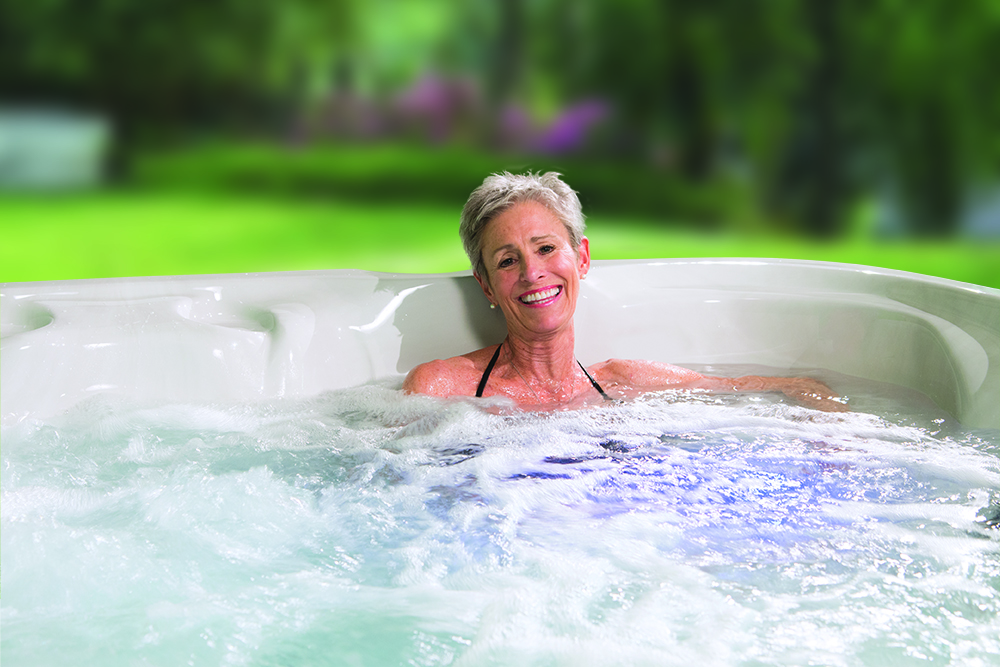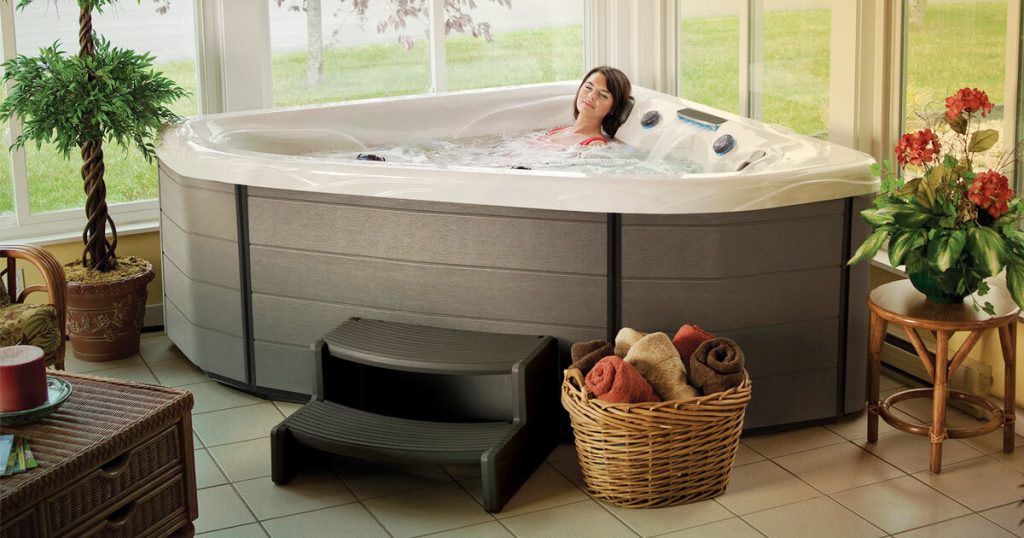When we think of joint stiffness and inflammation, it’s often associated with the natural aging process. However, for those living with rheumatoid arthritis, these symptoms aren’t just signs of growing older; they’re indicative of a chronic inflammatory disease that can be seen in nearly every aspect of life.
Rheumatoid arthritis affects 18 million people worldwide and about 1.3 million adults in the United States. Most people with RA are typically diagnosed between the ages of 25 and 45, setting individuals on a journey to adapt their lifestyle while trying to maintain a high quality of life.
While there’s no cure for RA, people living with this condition can manage the condition with a variety of treatment options. Medication is often a cornerstone in a treatment strategy, providing relief from the persistent joint pain and inflammation. In addition, lifestyle changes and complementary treatments such as hydrotherapy can be beneficial.
From pain relief to improved joint mobility, hot tub therapy can make a significant difference in the health and quality of life for those with RA.

What is rheumatoid arthritis?
Rheumatoid arthritis is not like osteoarthritis, which is often associated with wear and tear. With RA, the body’s immune system mistakenly attacks the synovium, the lining of the membranes that surround the joints.
But what causes the body’s immune system to attack the synovium? Researchers aren’t quite sure. However, the cause of RA is believed to involve a combination of genetic and environmental factors.
People with RA often experience symptoms including pain, swelling, stiffness, chronic fatigue and, sometimes, deformity. RA is not solely age-related and can affect individuals at any stage of life.
The autoimmune condition typically affects joints on both sides of the body simultaneously. For example, if the right wrist is affected, the left one is likely to be as well. Beyond joints, RA can affect other organs and systems in the body, including the heart, lungs, and eyes.

Understanding hydrotherapy
Water-based treatments have long been used throughout history to treat health conditions and promote an overall sense of well-being. Ancient Greeks and Romans soaked in hot springs and mineral waters to treat wounds, relieve tired muscles, and socialize. In England, people flocked to Bath to realize the benefits of hydrotherapy.
At its most basic, hydrotherapy is the use of water for therapeutic purposes. The combination of buoyancy, warmth, and resistance can promote healing and relaxation.
Benefits of warm water
Temperature is central to the hydrotherapy experience, especially when using a hot tub. Warm water has an overall soothing effect on the muscles and joints, providing relief from pain associated with conditions like rheumatoid arthritis, muscle strains, and chronic pain. It also helps to improve circulation and promote better sleep.
People who soak in warm water might also see reduced swelling and inflammation — a common symptom of rheumatoid arthritis. With less inflammation, people can enjoy improved joint mobility and flexibility.
The effects of buoyancy
Water’s buoyancy has a significant impact on the body, particularly when you are submerged beyond your waist in water. In fact, when you are in water up to your chest, about 80 percent of your body weight is supported by the water. That’s why you experience that sense of weightlessness in the water.
But the effects of buoyancy go beyond reducing the stress gravity puts on your joints. It also helps improve mobility and circulation.
Muscle relaxation
Most people have had that “aah” moment when stepping into the water, especially if it’s a hot tub. Among the benefits of hydrotherapy is muscle relaxation. The combination of water temperature and buoyancy alleviates tension in your muscles and helps you relax — something that can be hard to do for those living with RA.

Rheumatoid arthritis and hot tub therapy benefits
Hydrotherapy offers a holistic and gentle approach to managing conditions like rheumatoid arthritis. While it doesn’t replace conventional medical treatments, it can play a valuable role in enhancing overall well-being.
As people with RA seek a comprehensive approach to symptom management, hot tub therapy can become an integral part of a daily routine and journey toward a more comfortable and active life.
Pain relief and reduced inflammation
Pain is one of the most common symptoms of rheumatoid arthritis, and it can take its toll on people trying to manage the condition. Even with medication, nearly 40 percent of people with RA experience moderate to severe pain [source].
And relieving that pain, or at least managing it, is of high importance. Combining hot water and massage jets, hot tubs provide a soothing space to alleviate joint pain and discomfort. The warm water helps relax muscles and reduce stiffness, providing a natural and drug-free avenue for pain management. The warm water also increases blood circulation, facilitating the delivery of oxygen and nutrients to inflamed joints.
While RA often starts in the smaller joints, the symptoms often spread to other areas of the body including the elbows, hips, and shoulders. The jets of a hot tub can help ease muscle tension around those joints, allowing people with RA the opportunity to unwind.
A unique feature exclusive to Master Spas hot tubs is the StressRelief Neck and Shoulder Seat. With out-of-the-water jets and a thoughtful jet pattern, this seat targets an area of the body that often carries a lot of tension. The jets are also adjustable, allowing you to dial in just the right amount of pressure so you can achieve the sense of calm you are seeking.
Improved joint mobility and flexibility
When the immune system attacks the synovial lining, it can cause inflammation and damage to your joints. And you know what that means – those joints affected by rheumatoid arthritis don’t exactly move like the healthy ones.
But for people with RA, it’s important to find ways to maintain or even improve range of motion and flexibility. Exercise is important but hot tub therapy can also offer the relief and support needed to improve mobility. The water’s buoyancy supports the joints while the warm water helps muscles relax. Relaxed muscles are more pliable and responsive to movement, aiding in improving overall joint flexibility.
You can even take advantage of water’s natural benefits by moving through some simple hot tub stretches, which are designed to further improve flexibility.

Better sleep
The impact that RA has on a person extends beyond joint pain and damage. Many people with the autoimmune condition experience chronic fatigue and problems sleeping. Among the sleep problems are trouble falling asleep and a sense of restlessness. Research shows that many of the sleep issues stem from pain — not necessarily a surprise as it’s hard to fall asleep when you are struggling with pain and discomfort.
In one rheumatoid arthritis study, participants reported that they weren’t able to get enough sleep nearly 60 percent of the time.
But getting enough sleep is important not only for physical health but mental well-being, too. It’s important for those living with RA to find ways to fall asleep more quickly and achieve better sleep are important to people with RA.
Hot tub therapy has been shown to support quality sleep. Soaking in a hot tub helps relax the body and mind, helping to ease the pain that often interferes with quality sleep. In addition, soaking in hot water — and then getting out of the spa — triggers changes in body temperature that allows you to fall asleep more quickly and enjoy higher quality sleep.
Enhanced mental well-being and relaxation
Managing a chronic illness can take a toll on mental health. The emotional rollercoaster of coming to terms with the diagnosis, facing uncertainties, and adapting to a new normal can be overwhelming.
People with RA are more likely to experience anxiety, depression and cognitive impairment compared to the general population. And that stress can further exacerbate the physical symptoms of the condition.
It’s important for people with RA to find ways to prioritize their mental health, whether it’s seeking support from a mental health professional or joining a group. Complementary therapies, such as using a hot tub, can help with relaxation, stress, and anxiety.
Incorporate a hot tub into your daily routine becomes a dedicated time for self-care. Making time for yourself can feel empowering and help to improve your mental outlook. It doesn’t hurt that soaking in a hot tub can also trigger the release of endorphins, which are the body’s natural mood enhancers.

Improve your health and wellness with hot tub therapy
Are you ready to invest in your well-being and backyard? Master Spas hot tubs can be enjoyed this year and many years to come. You can click here to learn more about the benefits of hydrotherapy. Or, contact your local Master Spas retailer to learn more about hot tub ownership. Wondering how much a Master Spas hot tub costs? You can request a quote here.


